In the last few years, multiple celebrities launched their own tequila brands. Dwayne Johnson's Teremana Tequila is probably the most famous one of them. Johnson worked with celebrity spirits whisperer Ken Austin and released the agave liquor in March 2020. The brand sold 300,000 cases by the end of that same year; A respectable number for a newcomer.
To put things a little into perspective, 2020 was a record-breaking year. The US imported 254 million liters of tequila, more than ever before. And Teremana accounted for a whopping 1 percent of that. -As a new brand in only nine months.
The brand started with only two expressions: A classic unaged Blanco Tequila that's great for Margaritas and a Reposado aged in American Whiskey barrels. Lately, Teremana also released a premium Añejo Tequila that's aged for up to two years.
Read our expert review on each of the three tequila expressions.
Read the full review of Teremana Blanco
Read the full review of Teremana Reposado
Read the full review of Teremana Anejo

The spirit is crystal clear and transparent. Teremana Blanco rests in stainless steel tanks so there's absolutely no color derived from wooden barrels.
The aroma of Teremana's Blanco Tequila has some intense and dominant notes of raw agave and distinct, sharp alcohol notes. It's a bright and crisp spirit that offers an old-school flavor profile.
In the background, you can smell subtly earthy, vegetal aromas with hints of black pepper and cinnamon.
The taste is a bold combination of cooked agave and ethanol flavors. The tequila is slightly on the bitter side with some distinct vegetal flavors. Hints of citrus and black pepper aim to balance the agave and alcohol notes but are hardly detectable.
After a bold taste of agave and ethanol, Teremana Blanco ends with a warm and spicy finish, including distinct bitter flavors. There's also a not-so-prominent medicinal note in the background that I don't really like.
2.5 out of 5 stars.
I would recommend skipping this. It's not an ideal sipping tequila and only a decent choice for making Margaritas or other cocktails. It's certainly worth a try if you can test it for free, but at this price point, I highly recommend using another spirit for your tequila cocktails.

A faint, light golden color when poured into the glass with medium viscosity. The spirit ages in former bourbon barrels to develop flavors and obtain this elegant golden tint.
The scent of the reposado tequila contains strong notes of roasted agave paired with spices like nutmeg, cinnamon, and vanilla. In the background, there's a subtle note of butter and hints of oak.
On the palate, sweet almond and vanilla flavors dominate the agave notes. It's much sweeter than the Blanco expression with only subtle oaky flavors.
Teremana Reposado Tequila has a smooth and balanced flavor, with notes of oak, vanilla, and citrus. The tequila has a beautiful golden color, making it a visually stunning addition to any cocktail.
The finish is full-on vanilla flavor with a warm, velvety texture that coats the palate and a long, sweet finish. I slightly prefer the finish over the one of the blanco tequila, but it's still far from great.
2 out of 5 stars.
Just like the Blanco version, I wouldn't recommend the Reposado. Added sweeteners and vanilla cover up the sharp bite from alcohol. But unfortunately, these aromas come across as artificial. And yet, the final result is too heavy on the alcohol notes.
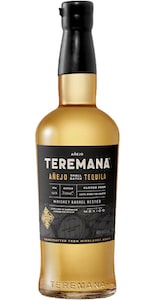
In the glass, the Añejo has a beautiful dark golden to amber color. The spirit aged for at least one year and up to two years in whiskey barrels to develop a richer flavor profile and darker color.
It has a rich and warm aroma with oak, vanilla, and caramel. In the background, faint black pepper notes pair with spicy cinnamon.
The taste of this Añejo Tequila is beautifully warm and sweet, with plenty of oak and vanilla flavors. Supporting flavors are sweet, roasted agave, and hints of black pepper, olives, and butter.
A light, warm, and sweet finish rounds off this smooth tequila. The spirit ends with a smooth, rich finish that's much better than the other two bottles.
3 out of 5 stars.
Their Añejo expression is a much cleaner, smoother tequila compared to their Blanco and Reposado. It's still not perfect, but they're certainly on the right way to improve the quality of the tequila.
The brand name Teremana stands for Spirit of the Earth. It's derived from the Latin word terra, meaning earth, and the Polynesian word Mana, which stands for spirit. The second part of the name hints at Johnson's Polynesian heritage.
Sustainability is a big topic in the modern world. And Teremana, too, takes sustainability seriously and turns all leftover agave fibers into natural fertilizer. Water filtration systems make sure to reuse wastewater from the production process. Combined with the traditional production processes, Teremana wants to act as a role model in the tequila industry.
Teremana Tequila, like all other types of tequila, is made of Blue Weber Agave - also called agave tequilana. The agave they use to distill their tequila is grown in the Jalisco highland.
The tequila brand uses traditional tequila-making processes where the agave hearts are cooked and roasted in small traditional brick ovens before the distillation.
All tequilas by Teremana are distilled in handmade copper pot stills designed and produced by local artisans. The aged expressions age in wooden barrels, ex-bourbon barrels are used for the Reposado expression, and the Añejo ages in an American whiskey barrel.
Tequila made by Teremana contains 40% ABV (80 proof) and 0g of sugar and carbs. They're all also certified as gluten-free.
Teremana Tequila is a genuine small-batch tequila sold at a below-average price point. The Blanco Tequila is of decent quality. However, in my opinion, Reposado falls short.
The suggested retail price for the Teremana Blanco is $29.99. The Reposado sells at $32.99. Both prices are more than fair and are below the average market prices.
Teremana sells traditionally made tequila from Agave Tequilana in Jalisco, Mexico. It's made with traditional methods and distilled in an artisanal copper pot still.
Teremana's Tequilas are not ideal for sipping. But you can serve it as a shot or use it in traditional cocktails like the Margarita or Paloma.
Teremana Tequila is made by Siete Bucks Spirits managed and founded by Dwayne Johnson and Dany Garcia. Other business partners involved are Ken Austin and Jenna Fagnan.
Launched in March 2020, Teremana first released two expressions: Blanco and Reposado. In 2021, the Añejo Tequila was released as the third product of Teremana.
All Teremana Tequila is 80 proof (40% ABV).
Teremana Añejo is of higher quality compared to Teremana Reposado and Blanco. Artificially sweet vanilla notes in the Reposado expression make it less enjoyable, neat, and as a mixer.
The agave plants used to produce Sombra Joven Mezcal grow in the Oaxacan Sierra, close to San Juan del Rio and San Luis del Rio. Famed Sommelier Richard Betts launched the brand in an effort to fight the low-quality mezcal bottles produced solely for use in cocktails.
It is a small-batch, unaged, artisanal, distilled spirit with spicy and fruity notes and just a hint of smoke. The agave spirit tastes good while also establishing sustainable production processes.
The mezcal is produced in their own Plaenque in Santiago Matatlan using organic agave, sustainable wood, solar-powered tools for production, and rainwater.
Let's find out how good this spirit is in our expert review of Sombra Mezcal.
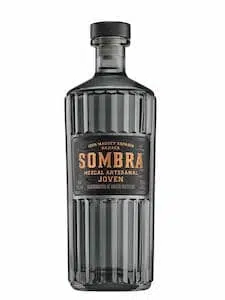
Sombra Mezcal is a sustainable mezcal brand established by Richard Betts in 2006. To produce their Joven Mezcal, Sombra only uses organic agave plants that grow in altitudes of up to 8,000 feet above sea level. During production, Sombra uses sustainable wood for roasting, a solar-powered tahona for milling, and rainwater to cool condensate lines.
Since 2017, the mezcal brand has distilled its spirit in its own Palenque, located in Santiago Matatlan.
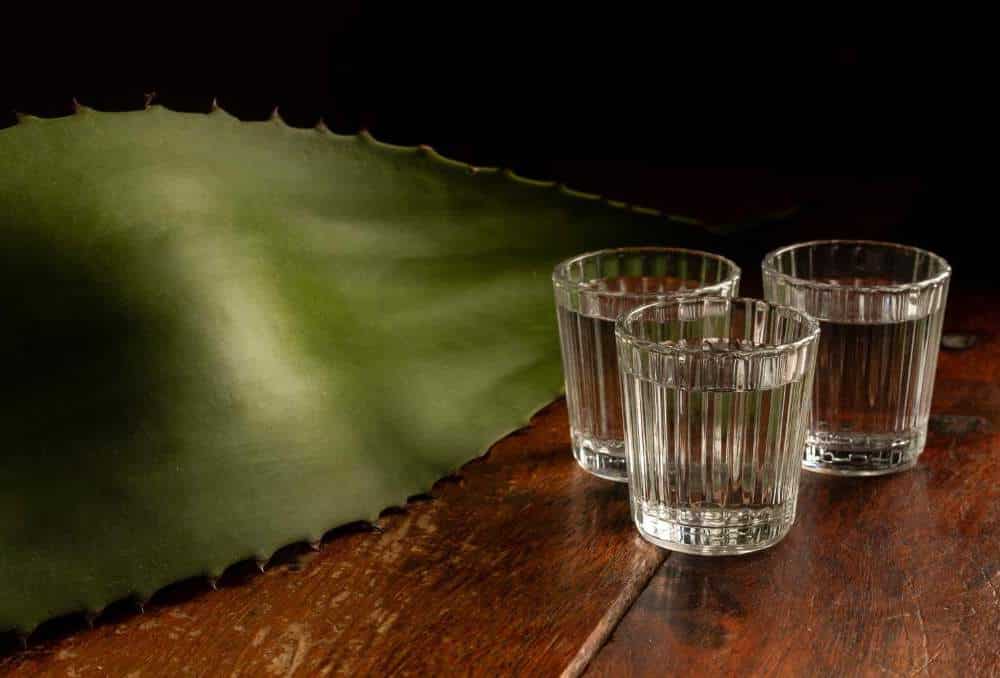
Poured in our tasting glass, Sombra Mezcal Joven looks like many other unaged agave spirits. Clear and transparent, and when swirling it, you get a nice and light coating on the glass.
The aroma of the spirit is slightly smoky and spicy, with sweet hints of banana, caramel, toffee, and cotton candy. If you let the flavors develop, the mezcal a subtle floral and fruity scent of mango and stonefruit emerges.
The flavor profile is straightforward, with light smoke and a distinct ethanol flavor. After a few sips, I can detect additional flavors like citrus, pepper, cherry, and tobacco.
The finish pairs strong alcohol notes with white pepper and oak lingering on your palate.
The Joven expression of Sombra Mezcal is a simple and smokey spirit with a simple flavor profile. However, the value for money is quite amazing, that's why we rated it at 3 out of 5 stars.
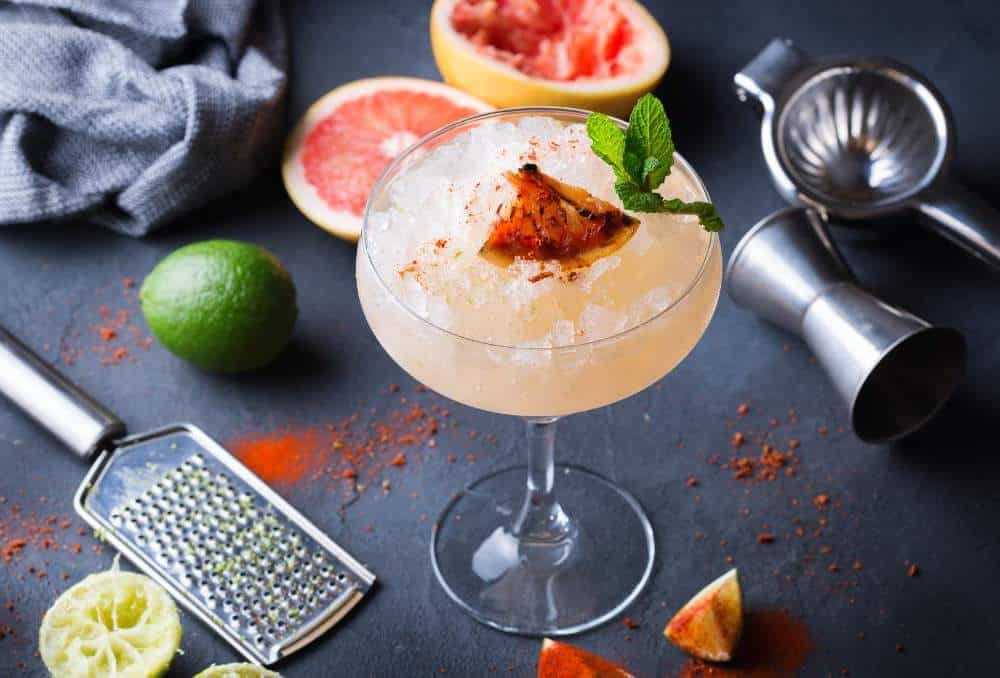
Sombra Mezcal Joven is made of 100% Espadin agave and has a distinct smoky note that works best in mezcal cocktails. Here are some cocktails, you should try making with it:

Even if it's the traditional way to drink mezcal, this Joven expression isn't the best sipper as it's heavy on smoke and alcohol notes. However, the agave spirit works excellently in mixed alcoholic beverages like cocktails.
Sombra also has offers types of mezcal that are more suitable for sipping. The first is Sombra Mezcal Reposé, a Reposado Mezcal aged in formed Bordeaux wine barrels sourced from a wine estate in St Julien, France. The other is Sombra Mezcal Ensamble, a limited edition spirit made with a ratio of 61% Tepeztate and 39% Tobalá maguey.
Sombra Mezcal, crafted in Oaxaca, Mexico, has introduced a fresh bottle design inspired by Mexican tradition in 2020. The design draws from the "vaso veladora," originally used to hold prayer candles in Oaxacan churches but later repurposed for sipping mezcal.
The bottle's subtle grey-shaded glass pays homage to the brand's name, "Sombra," meaning "shadow" in Spanish, and the light smokiness of its flavor. Copper lettering and a refreshed logo symbolize the stills used in distillation.
The bottle shape represents the adobe bricks created by Sombra's Adobe Brick Project, part of their sustainability initiatives, which recycles distillation waste to construct houses for those in need in the local community. This eco-conscious design, in collaboration with Sandstrom Design, not only respects Oaxacan traditions but also aligns with Sombra's commitment to sustainability.
I already mentioned a few things Sombra does to ensure they work sustainably and responsibly. But I want to explain the measures they take in more detail.
The agave plants Sombra uses to produce their mezcal are growing at very high altitudes on the slopes in the Sierra of Oaxaca. The Espadin agave for their Joven Mezcal grows at an altitude of up to 8,000 feet above sea level.
Sombra has contracts with local farmers there and only purchases organic agave plants. They're also hand-harvested and fermented with the help of native yeast.
The hand-harvested piñas are roasted, and for this procedure, any mezcal brands need wood. Sombra uses only certified and sustainable wood. That helps in preventing deforestation.
The milling process of mezcal is performed according to the traditional method using a stone tahona. Usually, this stone wheel is powered by mules or horsed. However, at Sombra, they work without animals throughout the entire production process. Instead, the mill is powered by solar energy installed by Sombra.
Also, the production process is powered mainly by clean energy and utilizes rainwater to cool condensate lines. This rainwater is collected on the factory roof, just like the solar power used in the distillery.
The biggest problem in mezcal production is the waste it produces. Agave plant fibers left after roasting, fermentation, and distillation are often dumped into rivers, lakes, etc., close by a distillery. And with it, also the acidic by-products that contaminate the water.
As if that wouldn't already sound alarming enough, the volume of waste is approximately ten times the amount of the actual end product. So what to do with it? At Sombra, they mix leftover agave fibers with earth to create bricks used to build houses in villages in Oaxaca for people in need.
In our Sombra Mezcal review, we had a closer look at their Joven expression and how it compares when drinking neat and in cocktails. Our result is a solid 3 out of 5 stars, which more or less complies with the customer reviews I read before trying the agave spirit.
The 100% Espadin mezcal works best in cocktails and offers solid value for money. For that reason, If you come across this pretty bottle, grab it and give it a go.
When Dos Hombres started selling their Mezcal, they solely offered a single product. This Joven Espadin Meczal is made of agave plants from San Luis del Rio in Oaxaca.
In December 2020, only about a year later, they extended their lineup with a premium Tobala Mezcal. But as with many celebrity releases, people are skeptical about the Mezcal brand. Is it just another overpriced Mezcal on the market? Or have Aaron Paul & Bryan Cranston, better known as Walter White and Jesse Pinkman, created something that could establish itself on the market, even without celebrity support?
Read our in-depth Reviews on Dos Hombres Espadin & Dos Hombres Tobala Mezcal.

Their Espadin Mezcal is made from Espadin agave plant harvested in San Luis del Rio, Oaxaca. The piñas are roasted in underground oven pits for 7-10 days before the Mezcalero distills the agave spirit with mountain spring water. As per the two creators, their spirit consists of "a unique blend of the finest Espadin agave, hand-selected from the hillsides of a small village in Oaxaca" go into this liquor.
The brand website promotes the Mezcal as fruity with notes of mango, local fruits, wood, and smoke. Let's see how it does in our tasting:
After pouring the Mezcal into our tasting glass, you already get a hint of fruity flavors. It smells of apples and citrus fruit paired with sweet, caramelized agave, soft wooden notes, and a subtle earthy aroma. There's only a light alcohol note in the nose and only hints of smoke.
On the palate, you get roasted agave notes with more a prominent spicy alcohol flavor with subtle smoke in the background. After a few sips, I could detect some sweet mango notes, citrus flavors, and hints of apples, but all were very subtle. It has a surprisingly thin consistency and is not as complex as I would have wished.
The finish was great, with light agave flavors, some pepper, and a spicy kick of alcohol. Nothing too fancy, but a solid finish to round off our tasting.
Dos Hombres Espadin is not a bad Mezcal. It's smooth and does have all the basics an Espadin Tequila needs. So there is plenty of smooth smoke, citrusy flavors, and some fruity notes. However, due to the relatively low proof, the Espadin Mezcal tastes slightly diluted and lacks complexity. That is a chief cause for criticism, mainly because of the high price tag of $60.
Compared to other celebrity Mezcals, this bottle is far from the worst. And I'm sure that if the price were $40 instead of $60, more Mezcal lovers would appreciate this juice. Overall, a solid 3 out of 5 stars.

The Dos Hombres Tobala is a limited edition released in December 2020. At $349 per bottle, it's a pretty expensive Mezcal. But I want to remember how much time and effort went into such a product. The maguey Tobala used in this Mezcal is 25 years old, and some agaves are even close to thirty years old.
The scents of this Mezcal are soft and sweet. Peppery notes that remind of Tepeztate agave pair with sweet and fruity flavors like plum, vanilla, and lavender. In the background, you can find a pleasant smoky note that blends in nicely with this very appealing fragrance.
The Mezcal has a rich taste and a complex flavor profile full of herbal, fruity, and floral notes. Notes of rosemary, oregano, mango, plum, and lavender complement the flavors of cooked agave. The texture and mouthfeel are nice and thick, definitely richer than their Espadin juice.
The finish is soft, sweet, and floral, with raw honey notes and lavender.
The nose is soft and sweet, with a unique character. The taste is complex combining notes of cooked agave, chocolate, dried fruits, dried herbs, and a slightly lactic flavor. An overall pleasant Mezcal to drink neat at a very high price point.
It's hard to judge the fair market value, as you certainly pay extra for branding and limited availability. But if you're alright with that, Dos Hombres Tobala is a worthy addition to your Mezcal shelf. Especially for a Breaking Bad fan.
For our rating, we decided on a decent 3.5 out of 5 stars. It could have been more, but the high price point prevented that.
Dos Hombres Mezcal is made in a small village called San Luis del Rio, located in quite a remote section of Oaxaca. The man responsible for the actual spirit is Gregorio Velasco Luis. Gregorio is a third-generation Mezcalero who also produced Mezcals for renowned brands like Pierde Almas.
As mentioned, his production process for Dos Hombres is very traditional. But what exactly does that mean? The first Dos Hombres release was an Espadin Mezcal. That means the type of agave used for production is Espadin agave. Those agave plants have to grow for at least six years before it's time for harvesting.
After harvesting, the agave piñas are quartered and cooked in earthen pits. The process of roasting in these underground pit ovens lends the spirit its characteristic taste and brings out the natural sugars in the agave piñas. Also, the milling process is traditional: In a round hole, a horse-drawn tahona stone wheel.
This mashed agave is mixed with spring water and fermented for 7 to 10 days. That takes place in large wooden barrels. The result of this process is called "Tepache." Tepache is the base for the distillation process. Then, loaded in copper stills, the mixture is heated to obtain the final Mezcal.
In 2019, Breaking Bad Stars aka Jesse Pinkman & Walter White launched their own Mezcal brand. Two years later, in June 2021, Constellation Brands bought a minority stake in the company.
The Breaking Bad duo has set themselves the goal of creating an excellent Mezcal. Therefore, the production process is strictly traditional. The result is a 100% agave Mezcal made of the finest Espadin agave.
Aaron Paul and Bryan Cranston's Mezcal is just one of many Celebrity Mezcals and Tequilas on the market. Products like Casamigos by George Clooney, Teremana Tequila by Dwayne "The Rock" Johnson, or Eva Longoria's Casa del Sol Reposado are just a few celebrity-owned agave spirits brands.
Particularly their Espadin Mezcal works great in Mezcal cocktails. In combination with other spirits, liqueurs, and fresh ingredients, you'll get smokey drinks with that typical Mezcal punch.
Here are some cocktail recipes with Dos Hombres Mezcal you should try to make at home:
Mezcal and Amaro are a fantastic fit. And this Oaxacan Coffee cocktail is just another proof for that claim. I recommend using an Amaro Montenegro or Amaro Nonino with this one.
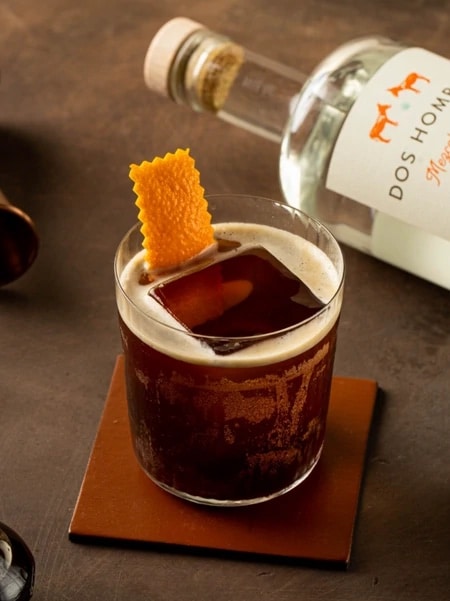
Ingredients
Preparation
The Dos Fashioned is an elegant twist on an Old Fashioned cocktail. Balanced and flavored with bitters and maple syrup, this drink is a beautiful alternative to the classic.

Ingredients
Preparation
A simple yet delicious riff on a classic sour cocktail. If you want to elevate this basic recipe, try our Mezcal Sour and use Dos Hombres Espadin as the base spirit.

Ingredients
Preparation
Dos Hombres Espadin Mezcal sells for $60 per bottle. The limited edition Tobala Mezcal is $349 per bottle and comes in special packaging.
Yes, Dos Hombres Mezcal is a good Mezcal but slightly over-priced. It's made of 100% agave and produced by a third-generation Master Mezcalero using quality ingredients and traditional processes.
Dos Hombres Mezcal was co-founded in 2019 by Bryan Cranston and Aaron Paul, better known as Walter White and Jesse Pinkman from the cult series Breaking Bad.
Yes, even after Constellation Brands acquired a minority stake, the majority of the company is owned by the two Breaking Bad stars.
Kahlua is a coffee liqueur from Veracruz, Mexico, made from arabica coffee beans, rum, sugar, and vanilla. The liqueur is of deep brown color, contains 20% alcohol by volume (40 proof), and is an ingredient in many classic cocktail recipes.
Cocktails like Black Russian and White Russian were the reason for its early success. But the recipe for making an Espresso Martini was what made it the world's best-selling coffee liqueur.
Every year, more than 1.5 million bottles of Kahlúa coffee-flavored liqueur are sold, with no end in sight. You can get Kahlúa in almost every country on the planet, and it's an essential ingredient in one of the currently trending cocktails - the Espresso Martini.
Kahlúa is dairy-free, but unfortunately, the liqueur is not entirely vegan. According to Pernod Ricard, one of their sugar suppliers is not using a not vegan-friendly refining process.
So let's find out when Kahlúa was invented, how it's made, and how it continues to influence modern mixology.
Facts | History | How it became famous | Recent history | Taste | Meaning of Kahlúa | Ingredients | Caffeine content | Production process | Cocktails | Alternatives | FAQs
Kahlúa coffee liqueur was invented in 1936 by Pedro Domecq in the rural area of rural Veracruz, Mexico. It contains the finest arabica coffee beans harvested in the area.
The idea for the first coffee liqueur was a spontaneous idea of 2 pals. -One of those many of us after a couple of beers with friends. But these two, known as the Alvarez brothers, actually followed up on it, and it paid off.
Only four years later, Kahlúa found its way to the US. From there, the brand started its victory march.
One thing that distinguished Kahlúa from other liqueur brands was clever advertising.
It began in the 50s with quirky figurines placed in each advertisement to honor the rich Mexican heritage. Although it looked a bit strange, people loved it.
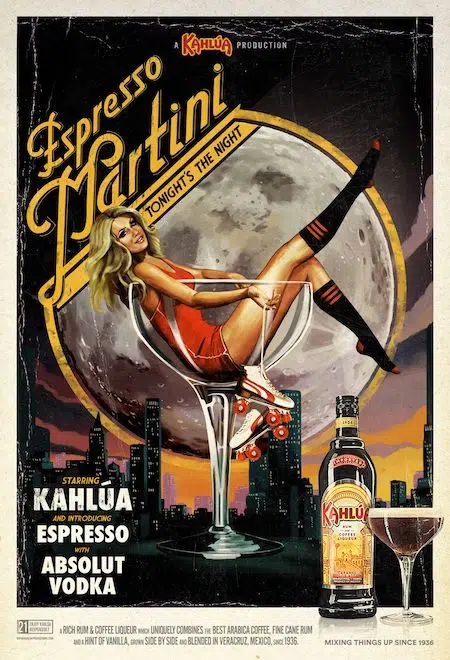
In the 1960s, Maria del Pilar Gutierrez Sesma took over as the company's general manager and surrounded herself with an all-female marketing team. What is still a rarity today was almost unheard of back in the 60s.
These ladies catapulted Kahlua to the next level of fame and success. From the late 1970s to the 90s, Kahlúa seemed to be everywhere. Drinks like the Black Russian, White Russian, and Espresso Martini contributed heavily to the fame of the coffee liqueur.
All those cocktail recipes explicitly called for Kahlúa and were ingeniously used in the brand's advertising campaigns.
Even today, where there's more competition than ever in the market of coffee liqueur, Kahlúa defends the number one spot. And it does not look like things will change anytime soon.
Since 2005, Kahlua has been part of Pernod Ricard, the world's second-largest wine and spirits seller, grossing just under 9 billion in 2021. Kahlùa contributed to that success with a sales volume of 1.8 million 9-liter cases that same year, making it the sixth bestselling liqueur worldwide.
Kahlúa has a rich, full-bodied, sweet taste with intense coffee flavors and hints of vanilla, caramel, and sweet butter. The mouthfeel is slightly syrupy.
At 20% ABV, it does not have a strong alcoholic bite but is sweet, smooth, and easy to drink. Thanks to the different flavorings and the high sugar content - Kahlua contains a whooping 40gr per 100ml- it is also popular with non-coffee drinkers.
There are two possibilities for how Kahlúa got its name. The first would be it goes back to the Veracruz language that originated in the 7th century. This theory states that Kahlua means 'house of the Acolhua people' in the local Nahuatl language. However, the brand Kahlúa says that this is not where the name originates.
The other option - the one Kahlùa themselves stick to - ties it to ancient Arabic languages. Allegedly, it once has been a slang term for coffee. Regardless of its origins and how farfetched they may sound, the name stuck.
The main ingredients of Kahlúa coffee liqueur are rum, sugar, and coffee beans. They use the finest 100% Arabica coffee beans, which bring the delicious bitter coffee taste to the liqueur.

Absolutely no artificial flavorings are involved. And the guys even make their own rum.
But let's take a closer look at the coffee beans: If there are real coffee beans used, there should be caffeine in Kahlúa, right? But it's not that straightforward.
Scientifically, the answer to the question "Does Kahlúa contain caffeine?" is yes. One liter of the liqueur contains 101 milligrams of caffeine. But if you break this down to one shot of Kahlúa (1.5 oz), you get only 4.5 milligrams of caffeine per serving. Coke has roughly the same amount of caffeine with 9.5mg per 100ml - or, for easy comparison, 4.2mg per 1.5oz.
If you compare this to a cup of coffee (40mg/100ml or 18mg /1.5oz), the caffeine in Kahlúa is very little. -Espresso even has 95mg per shot, so 20 times the amount of the coffee liqueur. - Remember this when looking through our favorite substitutes.
That's a provocative statement, but if you look at the process from start to finish, it is true.
Altogether, you need about seven years to produce a bottle of Kahlúa coffee liqueur. The majority of this time goes into getting the coffee beans. They only grow in the shade, not in the sun. That slows the process down a lot. Therefore, it can take up to 6 years until they're ready to be used.
Once the coffee cherries are ripe, the beans are extracted from the fruit and then need to rest for about six months. Before they finally arrive at the distillery, they get roasted to create that intense and bitter coffee flavor.
The rum is made by extracting the juice of sugarcane. Boiled and mixed with water, it's ready for distillation. It is combined with the coffee beans and gets the finishing touches before resting for another four weeks.
Now, Kahlúa's famous coffee liqueur is ready to be bottled and shipped to destinations all around the world.
Besides Kahlúa, Tia Maria is another big name in the coffee liqueur business. But there's plenty more competition nowadays since products containing coffee have been trending for years already.
Many of those alternatives are experimental, trying to push boundaries and create a richer flavor profile. Each product wants to be different by using a certain bean or roasting technique, alternative sweeteners, or a different brewing technique.
Here are some alternatives I recommend if you want to try something new.
CO'PS actually is not a coffee liqueur but an espresso liqueur. Therefore, one single shot of CO'PS contains the equivalent amount of caffeine of an Espresso. It also does have 30% vol. of alcohol, so you know you can get a real party started with this liqueur.
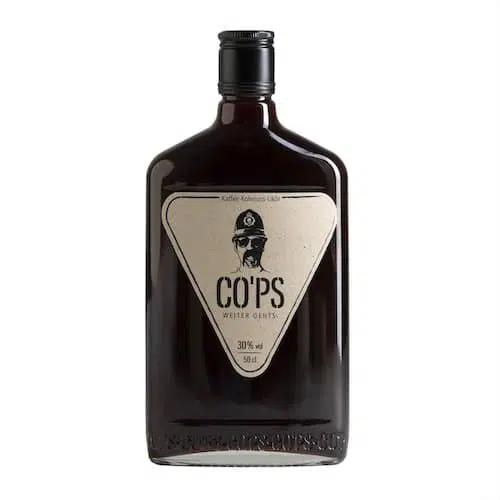
CO'PS is made from 100% coffee beans and cola nuts. The brand owners developed a maceration process that extracts aromas and caffeine extremely well and makes for a smooth taste.
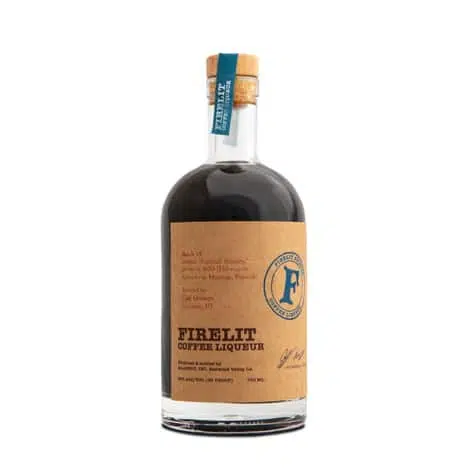
Firelit uses cold-brewed coffee as the base for their liqueur. Blended with a coffee-infused brandy and aged in steel tanks, it takes about four weeks until the flavors fully integrate and the product is finished.
I prefer to drink it neat, but it also works well in coffee cocktail recipes.
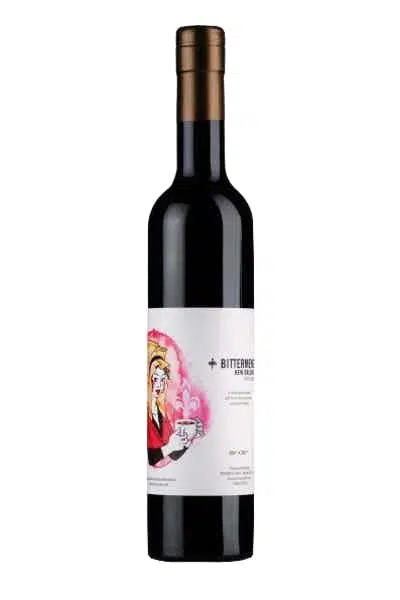
If you're looking for a heavier and more pronounced coffee taste, this New Orleans-inspired recipe is for you.
With Brazilian coffee beans roasted to perfection, this coffee liqueur is for hard-core coffee lovers who prefer their brew strong and bold.
Unopened, Kahlùa will last up to 4 years. Although, after about four years, it will start to lose some of its flavors. Opened, it will last for at least 18 - 24 months. When stored in the fridge, even longer.
Since 2005, the famous coffee liqueur has been part of the French company Pernod Ricard.
The most popular substitute is the slightly less sugary Tia Maria. However, there are many more excellent coffee liqueur brands worth trying.
The flavor of Kahlua is full-bodied, rich, and sweet.
Kahlua contains 20% alcohol (40 proof), making it considerably less boozy than spirits like whiskey, rum, or gin.
If you're into spirits from Mexico, you will know both, Tequila and Mezcal. The two spirits are closely connected but have distinct features that make each unique. All things considered, Tequila is a type of Mezcal, like Bourbon or Scotch are a type of Whiskey. Meaning that Tequila is always a Mezcal, yet Mezcal is not always Tequila.
Read our guide to learn everything about the two liquors and what the difference is between Mezcal and Tequila.

In short, Mezcal is an umbrella term for various agave spirits made from the hearts (piñas) of different species of agave. Tequila is a distinct kind of Mezcal produced in specific regions of Mexico, mainly in Jalisco. To make Tequila, you can only use one species of agave - the blue Weber agave.
But Mezcal is not just an umbrella term. It also represents a specific type of agave alcohol. This type is smokier than Tequila because the Mezcalero roasts agave piñas in fire pits before fermentation. That is not the case with Tequila, where you cook agave in ovens. But more things make Tequila different from Mezcal.
Tequila is exclusively made from the blue agave plant, also called agave tequilana. Mezcal, on the other hand, can be made from more than 30 different types of agave plants like Espadín, Tobalá, and Tepeztate.
It takes years for agave plants to fully mature. Some species require 6-10 years, other varieties take up to 20 years.
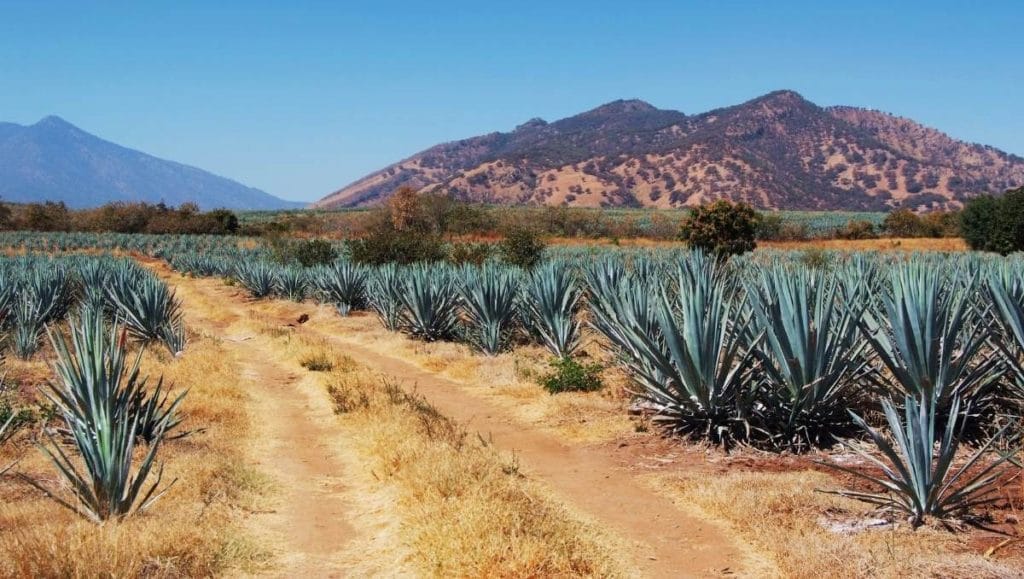
Tequilas must be distilled in the states of Jalisco, Guanajuato, Michoacán, Nayarit, or Tamaulipas. That is defined in the so-called Denomination of Origin (DO), which indicates possible production areas. Only spirits that comply with these regulations can legally be called, and labeled, a Tequila. Jalisco, where the town of Tequila is located, produces by far the majority of Tequila.
In comparison, Mezcal can be produced in nine major regions such as Durango, Guanajuato, Guerrero, San Luis Potosí, Tamaulipas, Zacatecas, Michoacán, Puebla, and Oaxaca.

Both spirits use the heart of agave plants, the piñas, to get that distinct agave flavor into the spirit. From there, the process of making Mezcal and Tequila is very different.
Tequila is made from the blue Weber agave plant. In the first step, the "Jimador" (the harvester of agave plants) uses a sharp tool called coa to harvest the core and remove the leaves around the agave core, the so-called piña.
In the next step, the distillers steam piñas in large above-ground ovens to cook the aged cores. The cooking initiates a chemical process in the piñas that breaks down complex carbohydrates and turns them into fermentable sugars.
The cooked agave is crushed and milled to release a sweet liquid that is then distilled in copper pots -usually two or three times.
For making Mezcal, the harvesting process is quite similar to making Tequila, with the difference that the Jimador can harvest other agave plants than the agave tequilana. However, in the next step, the Mezcalero roasts the agave piña in underground fire pits lined with hot rocks for several days.
This charring accounts for the smoky flavor Mezcal is famous for. After roasting, the piñas are milled using a tahona (large stone wheel), traditionally pulled by mules.
After distillation, the product rests in wooden barrels or clay pots for fermentation. The resulting agave mash is distilled twice in copper stills.
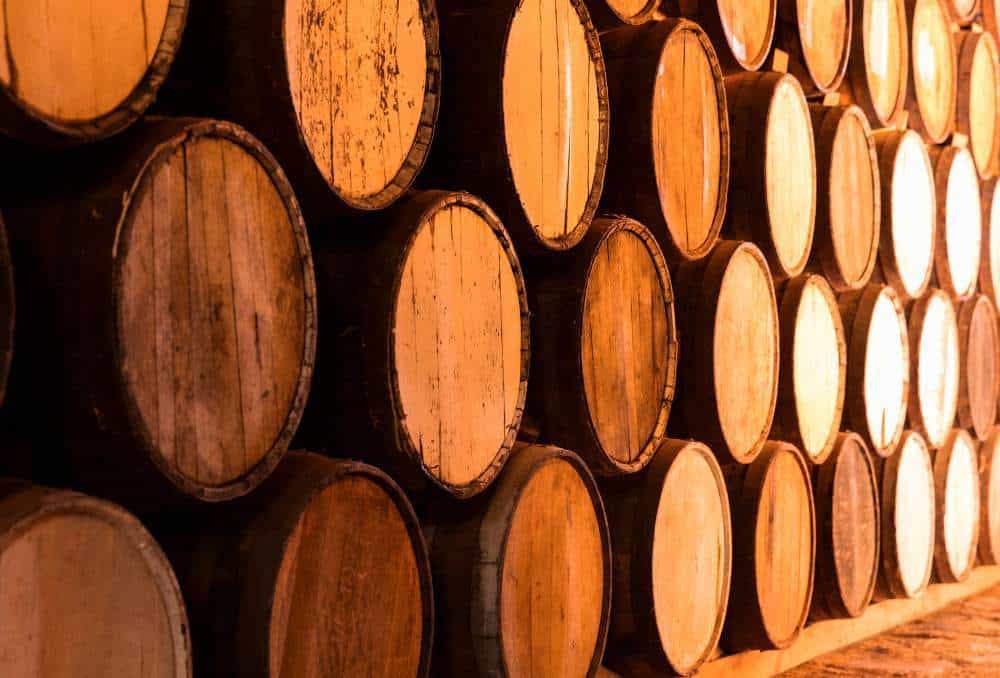
When the distillation process is completed, Mezcal and Tequila may age in wooden barrels to develop more mature flavors. The aging categories are similar but not exactly the same. Here's how both spirits compare regarding aging:
For a more detailed explanation, read this article about the different types of Mezcal.
For a more detailed explanation, read this article about the different types of Tequila.
Taste is one of the key differences between Mezcal and Tequila, as Mezcal often has a prominent edgy, smoky flavor and subtle sweet and earthy notes. But that's just a tiny part of the differences in the flavor profile.
The taste of Tequila depends on the exact growing region of the blue agave plant and the aging time. Blanco Tequila has a sweet and crisp taste with flavors like spice, pepper, citrus, and a distinct cooked agave note. Reposado Tequila tastes sweeter, more mellow, and has a better balance of flavors. Añejo and Extra Añejo Tequila have a dark color and a distinct balance of oak and agave flavors. They're often sweeter than young Tequila and contain sweet flavors like vanilla and caramel along with wooden oaky notes.
Mezcal, on the other hand, is made from a variety of agave plants. That makes the flavor profile very diverse. Mezcals can have a wide array of flavors ranging from floral, herbal, and citrusy to earthy, mineral, and spicy. You can also find Mezcal bottles with unique flavors like chocolate, chipotle, lychee, and meat. That makes it one of the most diverse of all Mexican spirits.
Common ways to drink Tequila is in the form of a shot served with salt and lime. Depending on the specific bottle, you can enjoy it neat or on the rocks. However, Tequila pairs so well with lime juice that the best way to drink it is in classic Tequila cocktails like a Margarita, Paloma, or a Tequila Sunrise.
The best way to drink Mezcal is neat at room temperature. In Mexico, a side of worm salt, orange slices, and fried grasshoppers is commonly served along with a glass of Mezcal.
When people talk about Mezcal, they usually mean a liquor category of its own, not the umbrella term for agave spirits. And in that context, there are many differences between Tequila and Mezcal. Yes, both are agave spirits, but that is where the similarities stop. They use different agave, come from different regions, are distilled differently, and have other aging categories.
Here's an overview of all the differences between Mezcal and Tequila:
Although the insect is sometimes called a Tequila worm, the worm in the bottle is only found in Mezcal bottles. Also, technically, the worm is not a worm but a moth larvae. These larvae are commonly known as maguey worm, as it lives on agave plants.
The legend says that in the 50s, a Mezcalero found a maguey worm in a batch of Mezcal. Thinking the presence of the larva had improved the taste, he placed a maguey worm in each bottle. That was such a huge success that other manufacturers followed soon, and it became a popular marketing strategy.
The right way to drink Mezcal is with a side of Sal de Gusano (worm salt) sprinkled on a slice of orange. Whereas Silver Tequila usually comes with a side of salt and lemon.
No, it is the other way round. Every Tequila is a Mezcal, but not every Tequila is a Mezcal. A Tequila is a specific type of Mezcal, like a London Dry Gin is a type of Gin. Tequila can be produced only in restricted regions in Mexico. And also, Tequila can be made only from the Blue Weber Agave (Agave tequilana).
Yes, you can, yet there's a but. The distinct smoky note in Mezcal often shines through in cocktails. When using Tequila instead of Mezcal, you will still get agave flavors, but not the distinct smoky taste of Mezcal. If you keep this in mind, you can certainly use both interchangeably.
Everybody knows Tequila, and lately, more and more people know Mezcal. But few know that Tequila, in fact, is a type of Mezcal and even fewer are aware that there are way more Mexican spirits. And not all of them are made from agave - even though, admittedly, the majority are.
This article is about traditional Mexican spirits. Of course, Mexico also produces Whiskey and a lot of other stuff, too. But those do not originate in Mexico, and I save those for another time.
So, here is our overview of traditional Mexican Spirits, starting with the most popular one.
Tequila certainly is the clear number one on this list. The spirit is made from one particular kind of agave, the blue weber agave. And it has to be produced in one of the five Mexican states of Jalisco, Guanajuato, Michoacan, Nayarit, or Tamaulipas. Tequila comes in different types, classified by their quality and by the time they are aged.
Tequila also is one of the most famous spirits to have as a shot. And for some of us, this may have led to bad ideas and severe hangovers in the past. So, if you've had your share of Tequila shots already, try one of the many Tequila cocktails instead. For instance, the Spicy Grapefruit Margarita, the Tommy's Margarita, or another riff on a classic, the Oaxaca Old Fashioned. If it's close to the festive season, a White Chistmas Margarita Punch is quite an eye-catcher, too.
Mezcal is becoming more and more popular in recent years. The spirit is also made of agave, has a distinct smoky taste, and is not as strictly regulated as Tequila. It must be double-distilled and can be made of 30 different agave species, with the most common being Espadin. And just as for Tequila, you can get different types of Mezcal.
There are also fewer geographic restrictions, which brought the spirit on the radar of celebrities. As a result, we now have Casamigos Mezcal by George Clooney. Or Dos Hombres Mezcal by two of our favorite Breaking Bad actors, Bryan Cranston and Aaron Paul.
Yet, the majority of Mezcal still comes from Oaxaca, Mexico. If you have never tried Mezcal before, try a sip neatly to get an idea of what smoky taste means in the context of agave spirit. It can be quite an experience. To balance the intense smokiness, you can also beautifully incorporate Mezcal in cocktails.
Should you need advice on which Mezcal to buy, check out this list with our Mezcal recommendations.
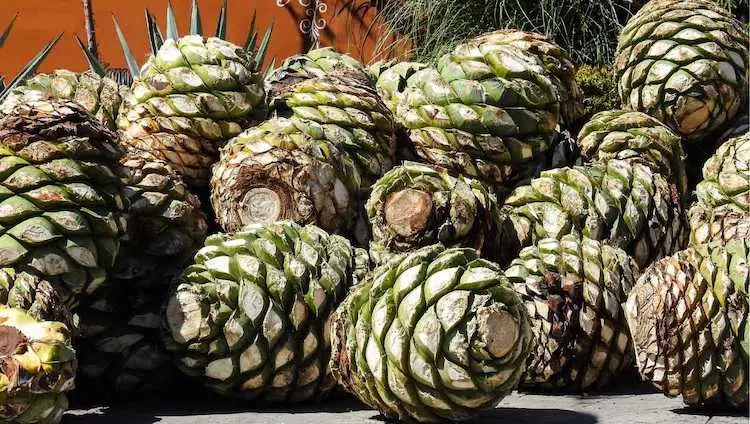
Sotol has had a bit of a difficult childhood. Once belonging to the category of Mexican agave spirits, it was re-classified when the plant used to make it, the so-called desert spoon, suddenly wasn't considered an agave anymore. But apart from the scientific/botanical aspect, Sotol nonetheless is closely related to Mezcal and Tequila.
The taste of Sotol is closer to Tequila than it is to Mezcal, simply because the production process doesn't involve roasting the plants, and therefore it's not a smoky spirit. The plant used for making Sotol grows anywhere between Texas, US, and Oaxaca, MX. And the taste of this Mexican spirit strongly depends on the territory where the plants get harvested.
Except for the Desert Door Distillery in Texas, Sotol is distilled only in Mexico, with Chihuahua, Coahuila, and Durango being the main producers.
Pox is the first spirit on this list that is in no way related to agave. Its base is fermented corn, wheat, and sugarcane. And it is even more of a niche product than Sotol. But, like Sotol, this ancient Mayan spirit slowly starts to gain some international recognition. In case you were wondering, Mexicans pronounce the "x" like "sh". So the correct way to say it would be "Posh".
Because the product is not legally regulated, you can get a whole variety of different Pox with flavors ranging from sweet, slightly rum-like to notes reminding of smoky corn tortillas.
When you want to use Pox in Cocktails, you can substitute it for Rum or for Gin even. Despite being a Mexican spirit, it's not the best choice for classic Mexican cocktails like the Margarita or the Paloma.
Charanda is best described as Mexican Rum. And it is made from sugarcane in the form of either juice, molasses, piloncillo, or a combination of those.
Piloncillo is unrefined sugarcane in solid form. After fermenting the sugar cane, the mash is distilled twice before being bottled.

The Mexican spirit is commercially available unaged only, but some experiment with barrel-aging.And even though it is referred to as Mexican Rum because of its base product, it tastes nothing like Rum. It has some unexpected floral and fruity notes mixed into the spiciness coming from the sugarcane.
In the Purépecha language, Charanda means red-colored soil, which derives from the hill range Cerro de la Charanda, where the first distillery was built in the 16th century. And the characteristics of the spirit depend a lot on the territory of origin.
Therefore, since 2003, Charanda has been officially a protected denomination of origin spirit. Since then, only products made from sugarcane growing and being distilled in one of 16 municipalities (from a total of 113) within the Mexican state of Michoacán can be called Charanda. So the territorial restriction is a lot stricter than it is for Tequila.
However, the passion for distilling Charanda also is way less than for Tequila. And where once were almost 100 distillers, there are only about 6 or 7 left today. And because the name is so little known, these producers write aguardiente or artisanal Rum on their bottles. But with the rise of Mezcal and Sotol, Charanda, too, prepares for a comeback.
Now we're back with the Mexican spirits from agave again. Raicalla basically is a Mezcal produced outside the designated Mezcal states. Funnily enough, the largest part of the production happens in Jalisco, the state primarily associated with Tequila.
As for Mezcal, the agave hearts are roasted before distillation. But unlike other Mexican spirits that need to be double-distilled, Raicilla is usually single-distilled. It has a four times longer fermentation process than Mezcal and can be made of any agave species.
Because of the extended production process and the countless agave varieties used, the flavor profile of Raicilla is hard to pin down. It has a massive range. Yet, usually, it is pretty acidic and not the ideal Mexican spirit to use in cocktails.
Raicilla once was the drink of the poor and, as such, first prohibited and then heavily taxed. Production moved underground, quite similar to the Irish Poitín. And because taxes were only on spirits made from the piña, peopled lied when tax collectors became suspicious. They said they used the roots instead of the piña - of course, they didn't. But it still manifested the name Raicilla or little root.

Comiteco is yet another agave spirit, but it is solely made in one town in Chiapas, Comitán de Domínguez, and from the juice of one type of agave, the maguey Comiteco.
It is quite a smooth drink with an herbal and earthy aroma, but none of the smokiness we know from Mezcal or Raicilla. For Comiteco, neither the piña (heart) nor the pencas (leaves) of the agave are used. Instead, only agave sap is extracted from the piña and then distilled. This sap is also called aguamiel, which literally translates to honey water.
In the mid-1900s, the production of Comiteco was almost on one level with Tequila, but a dramatic shortage of maguey Comiteco brought it to a sudden halt. And to protect the few plants left, the spirit was banned in the 60s. And that ban was lifted only in the 90s when the population had fully recovered. Thankfully, these days, the production of Comiteco is way more sustainable than it used to be in the 1950s.
It's hard to pinpoint the taste of Comiteco. It's a bit like Rum mixed with agave and a hint of honey. But because it's so smooth, it makes a decent good cocktail ingredient.
Like Tequila, Bacanora is a sub-type of Mezcal. The Mexican spirit was issued an origin denomination bill in 2000 and since then can be made only from agave growing in designated municipalities in the state of Sonora.
And to round up that article nicely, tastewise, it occupies a spot right between Mezcal and Tequila, with the production method being more similar to that of Mezcal. It has a complex and peppery aroma with an earthy finish. And it carries a subtle smokiness, too.
First, Bacanora could be made from any wild agave plant, but the more popular it became, the more refined got the production process. And eventually, only Agave Pacifica was deemed suitable for making the spirit.
And Sonorans loved this new, smooth spirit. So much, in fact, that government put an end to it. Not because of any shortage in agave, but because people drank it every day, and things started to get out of hand. That was in the late 19th century, and it took almost 100 years for the ban to be lifted again. Since 1992, Sonorans can enjoy their favorite spirit in public again. Cheers to that!
A group of friends with a great passion for Sotol founded the Flor del Desierto Sotol brand. The story of three friends from Chihuahua founding Flor del Desierto has a genuinely fascinating script. It started with one of them winning a baking contest using Sotol as the secret ingredient.
And subsequently, the friends decided to find the best Sotol out there. In the process of doing so, they came across countless bottles of Sotol, but only a few of them could convince them.
Consequently, the brand does not distill its spirit but collects the best Sotols and releases them under its Flor del Desierto brand. Made from different distillers in different areas, each of their products shows another aspect of the Northern Mexican state of Chihuahua.
So each release of Flor del Desierto has its unique range of flavors, is distilled by a different master distiller, and showcases a unique type of terroir. That's also why the character of those spirits can vary wildly. And why it's so hard to predict if you like their latest release as much as the last one.
The aromas are fresh, sweet, and grassy - with hints of limestone. You can smell herbs, asparagus, and even lettuce.
The 47.5% ABV makes for a full-bodied Sotol that starts with smoky cedar notes. As the smoky flavors fade, you can taste eucalyptus, pine, anise, and cilantro combined with spicy notes from cloves and a subtle sweetness.
Overall, a very distinctive flavor profile for a Sotol that is nonetheless very pleasant in aroma and taste.
The Sotol from Flor del Desierto is best consumed neat or over ice. However, their Sotol is also an excellent base for cocktails. The Sierra expression is an ideal alternative to Mezcal in a Mezcal Negroni.
Flor del Desierto Desert is best in a sour cocktail riff, especially when also adding a flavorful amaro liqueur like Amaro Nonino or Amaro Montenegro. You should either, use a split base approach of 1 ounce of Sotol and 1 ounce of Amaro, or a more Sotol-forward combination of 1.5 ounces to 0.5 ounces.
Flor del Desierto Cascabel works great in an Old Fashioned that highlights its meaty and mineral flavors. I prefer to replace the classic sugar cube with agave syrup for a more vegetal aroma and taste.
The Sotol brand was founded in 2011 by three friends, all having grown up in Chihuahua. Their approach of finding the best Sotols and releasing them under one brand brings different methods, experiences, and tastes together into one single brand.
And not only did their triple distilled Sotol receive a gold award from the National Academy of Mezcal, but it is also the first Sotol in history certified by the Mexican Sotol Counsel (Consejo Mexicano del Sotol).
According to its homepage, the brand currently offers five varieties of Sotol. The different bottles available are:
And as each product is very different from the others, here is a short description of each bottle including tasting notes.
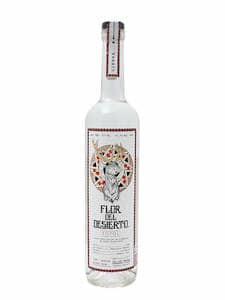
Type of Dasylirion: Wheeleri
ABV: 47.5%
Sotolero/Distiller: Jose Armando Fernandez Flores
City: Madera
The Sierra bottle is probably my favorite Sotol sold by Flor del Desierto. It is made from the Dasylirion Wheeleri plant and produced in Madera, Chihuahua. The high amount of alcohol (95 proof) makes this spirit full of flavor.
The aromas are fresh and vegetal. You can smell herbs, asparagus, and even lettuce and taste eucalyptus and cilantro combined with spicy notes from cloves and a subtle sweetness. Even some notes of clay coming from the clay pot distillation shine through. Overall, a wonderful and highly recommended Sotol and one of the best choices for beginners.
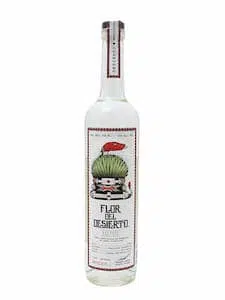
Type of Dasylirion: Leiophyllum
ABV: 45%
Sotolero/Distiller: Gerardo Ruelas Hernandez
City: Municipality of Coyame del Sotol
This Sotol is produced by Gerardo Ruelas. The Sotolero grew up in a Sotolero family and continues the tradition in the third generation. The spirit made of the Leiophyllum plant is double-distilled in traditional copper stills.
It has a slightly smoky and savory smell, and the mineral taste is typical for Sotol. The flavor is overall quite sweet compared to other Sotols. It even carries hints of sweet fruit like bananas.

Type of Dasylirion: Leiophyllum
ABV: 45%
Sotolero/Distiller: Gerardo Ruelas Hernandez
City: Municipality of Coyame del Sotol
Flor del Desierto Veneno is another release by master Sotolero Gerardo Ruelas. But, as opposed to his unaged "Desert" expression, this one is aged in Bourbon barrels and cured with venom from rattlesnakes. Yes, you got that right: venom from a rattlesnake. Unfortunately, this rarity won't make it to the US since spirits cured with venom are strictly prohibited.
I can't tell you much about the taste and aromas as I didn't have the chance yet to try this unique bottle of Sotol. However, I got to taste a similar bottle from the same brand called "Cascabel". Continue reading the paragraph below to find out more.
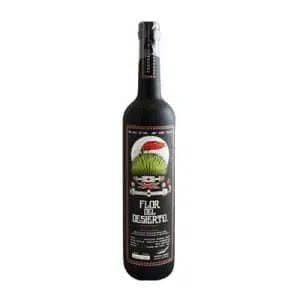
Type of Dasylirion: Leiophyllum
ABV: 48%
Sotolero/Distiller: Gerardo Ruelas Hernandez
City: Municipality of Coyame del Sotol
The name "Cascabel" translates to "rattlesnake". This time rattlesnake meat gets added during the final step of the distillation process. The spirit then ages in oak barrels for a few months before it's bottled and sold. And infusing alcohol with parts of a rattlesnake is not prohibited, so it happens you can get this bottle outside of Mexico, as well.
The aroma and look of this expression are highly unusual for a Sotol. The smell alone could make you believe that you're drinking Bourbon here. The flavors are not too bold but well-pronounced, with lots of meaty and mineral notes and just a touch of smoke. So you can taste something that remotely could be meat from a rattlesnake. If I hadn't known I don't think that would have been the first thought, but I did, so…
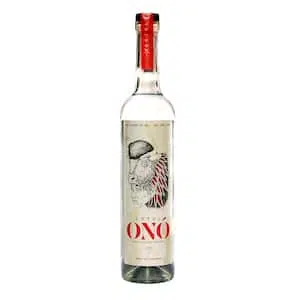
Type of Dasylirion: Cedrosanum
ABV: 45%
Sotolero/Distiller: Gerardo Ruelas Hernandez
City: Municipality of Coyame del Sotol
The Ono expression from Flor del Desierto is yet another spirit made by Gerardo Ruelas. But this time there's no reptile involved. The Sotol is made of Dasylirion Cedrosanum, which creates a complex, herbaceous, and fresh taste with herbal, vegetal, and spicy aromas.
On the palate, you even get some fruity notes of guava and coconut before the long and dry finish.
The bottles of Flor del Desierto are tall and slim. They're either transparent (Sierra and Desert) or black (Cascabel and Veneno). The sleek bottle stopper made from real wood is a nice touch to an overall elegant bottle design. nice accent.
A frozen Mango Margarita is a fabulous drink for a summer holiday. It's best enjoyed during the day when the sun is shining. It follows the basic principle of a traditional Mexican Margarita but adds some bold fruit flavor to the mix. It has a frothy texture, is ice cold, and combines the refreshing, sweet taste of mango with the punch from the popular Mexican spirit.
Basically, you need all ingredients you would for a classic Margarita, plus some mango. Meaning, Tequila, Triple Sec, fresh lime juice, salt, and the star of the show: frozen Mangos. And that's also the beauty of this cocktail. As opposed to a Mango Margarita on the rocks, it works with frozen fruit. And that makes the whole mixing process pretty straightforward.
Even though I prefer to make the effort and use fresh fruits if I have the time. -Getting fresh, ripe mangos, dicing, and then freezing them yourself creates a sweeter and more intense mango flavor than frozen fruits do. But it's also a lot of extra work and not necessary to make a great Mango Margarita.
So, if you decide to use fresh mango, the drink works beautifully without an additional sweetener. With frozen fruit, I prefer to add a sweet component to enrich the sweet taste of the mangos. You can go with simple syrup, mango simple syrup, or agave syrup, which complements the flavor of the agave-based Tequila nicely.
Start with squeezing some fresh lime for the lime juice. Then continue with the salt rim for your glasses. Use a lime wedge to moisten the rim and dip it in chili salt. For a classic Margarita, I prefer fleur de sel, but with the texture of a frozen drink, I -like many others- somehow find the chili salt a better match.
Once done with salt-rimming your glasses, you can start with the actual drink. Because you have to use a blender for this frozen Mango Margarita, it's easier to prepare it in a larger volume. Therefore, as an exception from our other recipes, the measurements below are for four servings instead of one only.
Using frozen mango will save you the time for freezing and cutting them, as they usually come in small dices already. So all you need to do, really, is grab your food blender and combine all ingredients plus some ice cubes until you get a thick, smooth, and silky texture. Your drink is now more of a sorbet than a cocktail. So if you want to, you can let it water down a bit simply by waiting until some of the frozen water melts and makes your cocktail more liquid.
If you don't like frozen drinks, in general, but love the idea of a Mango Margarita, you can also make unfrozen versions. One would be a Mango Margarita on the rocks, prepared with the juice from fresh mangos.
But in case you don't have a juicer handy, you can also achieve a great result with fresh diced fruit instead of frozen mangos. Just substitute the frozen mangos in the recipe below with fresh ones and add another handful of ice cubes - but make sure your blender can handle them. You will get a beautiful, smoothy-like drink with a boozy kick of Tequila.
Usually, I use Silver Tequila for Margaritas, but for the Mango version, a Reposado or Añejo adds a nice layer of flavor. The sweetness from the mangos goes perfectly with the sweeter notes of aged Tequila.
As with all cocktails, you should use a spirit base of decent quality to achieve great results. If you're looking for good value for money, Patrón is a nice mid-shelf choice. But a silver or other types of Tequila work, too. So you don't need to hurry to the shops and buy an aged one if you have a good bottle of unaged Tequila at home.
For more inspiration on the Tequila part check our list of Tequilas that work great in a Margarita.

A Mango Margarita on the Rocks is the perfect warm-weather drink. It combines the zing of Tequila with the sweet freshness of mangos, the citrusy tartness of lemon, and a hint of bitterness from orange liqueur to balance it all out.
This recipe sets the mood for summer instantly. And that's all it takes:
You need Mangos, Tequila, Triple Sec, and lemons. Using fresh, ripe Mangos is the key to the perfect Mango Margarita on ice. Juices or nectar won't bring enough flavor to your cocktail, and you won't get the summer-mood freshness either.
And getting 100% Mango juice in stores seems to be an impossible task anyway. Looking at the back of a container, you usually see stuff like "apple juice from concentrate" or "pear juice from concentrate". -Even if the label on the front gives you the impression you would buy 100% mango juice, you're usually not.
So, if you want to do a Mango Margarita on the rocks, juicing fresh mangos is your best option - the same goes for the lime juice, by the way.
Once you have your fresh Mango juice, get your cocktail shaker. Add all ingredients to your shaker, and add plenty of ice. Shake until the outside of your cocktail shaker feels ice cold, then strain the content over ice into a (chili) salt-rimmed glass.
Usually, we like to use Silver Tequila for Margaritas, like, for instance, with a Coconut Margarita or also the classic version. But in this particular case, I prefer a Reposado or Añejo. The sweet and rich flavor of mangos goes extremely well with the aroma of aged spirits. For instance, Patrón offers good value for money. But a Blanco or Silver Tequila works, too. Only make sure to buy one of decent quality because a cocktail can only be as good as the base spirit used. -Even if you add a flavor as intense as mango.
If you don't buy mangos regularly, you might find it hard to tell the ripe ones, the premature, ore the overripe ones apart. -The nice red cheeks won't tell you anything except which side was facing the sun. However, these three things will:
I like to buy my mangos a few days earlier. They continue maturing at room temperature and are usually last long. -Even if bought quite ripe already. But don't store them in the fridge. They will only lose their beautiful flavor.
To remove the pit from a mango, hold the fruit with one hand, stem down. Then take a sharp knife to cut from the top of the mango down one side of the pit. Do this on both sides. Use your knife to cut off the fruit flesh close to the skin and dice the halves.
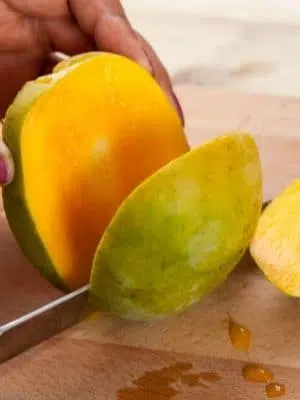
And if your fruit is already quite ripe, simply scoop out its flesh with a tablespoon. The middle part might look as if there's a lot of fruit left, but it is mostly pit and unusable.
-You may have seen people crosscutting and then inverting mango halves into fruity hedgehogs or something. But, unless it is for garnish, don't bother. With ripe mango, it's not even half as easy as these clips make it look.
There are multiple ways to approach this drink, and if juicing your fresh mangos first seems like too much of an effort, you can also make a frozen Mango Margarita by using frozen, diced mangos. To make a frozen Mango Margarita, you will need a blender instead of a cocktail shaker.
The second is, making it a not frozen Mango Margarita. It's a refreshing, slightly smoothie-like drink with mango puree from fresh fruits. This one can be made in a shaker or in a blender.

Los Magos Sotol is an excellent Sotol made of 100% organic Sotol plants. In an effort to showcase the beauty and magic of Sotol, the two founders of Los Magos (engl. "the magicians"), Eduardo Almanza, and Juan Pablo Carvajal, created this exquisite spirit. By searching for traditional Sotol makers, they want to bring an authentic version of Sotol to the people and do its traditions and history justice.
The flavor profile of Los Magos is earthy, salty, spicy, and has a delicate smoky note. Herbal and leather aromas complement these savory flavors. Although this Sotol did not age in barrels, it has fine woody notes.
Los Magos Blanco Sotol is made of plants that primarily grow in prairie grasslands. Therefore the taste is clean with notes of herbs and citrus. It has a light body and a very smooth finish.
The nose is elegant and masculine, with a subtle smokiness and notes of leather, herbs, wood, and spices. In the background, you can also smell a slight saline note. very
On the palate, Los Magos isn't much different from the nose. The smoky, salty, and spicy flavors are complemented by a subtle vegetal sweetness. The fascinating part to me is the wooden flavor in the spirit. It tastes as if this Blanco expression has been barrel-aged. fascinating
The aftertaste offers more salty and spicy flavors with a hint of sweetness.
The smoky and spicy flavors in the Sotol are slightly muted when served on ice. In return, the salinity is a bit more pronounced, as are citrusy notes in the spirit. The balance of flavors is even better compared to trying it neat. In exchange, this reduces the overall intensity of flavors.
Los Magos works excellent in cocktails like a Negroni or a Sotol Sour. For the latter, I used a twist on our Mezcal Sour recipe and replaced Mezcal with Los Magos Blanco. The result is slightly more refined, less smoky, and overall outstanding. The slight salinity in the spirit helps the drink to taste even more complex.
For our Neroni twist, we used Sotol instead of gin and added half an ounce of coffee liqueur. The flavor combination of coffee, herbs, bitterness, and sweetness matches remarkably well. It reminded me of a Mezcal Negroni with less pronounced smoky flavors.
After trying these two drinks, it's fair to say that this Sotol should work great as a substitute for Mezcal in cocktail recipes. The taste of the final cocktail is slightly different, with more saline and less smoky flavors.
The bottle design of Los Magos Sotol Blanco is quite basic and rustic. The 750ml bottle has a round shape and a wooden bottle stopper containing a crystal-clear liquid.
The label design is quite elegant and of dark green color with copper-colored lettering. It includes the origin of the spirit (Chihuahua) and information about the Master Sotolero that crafted this spirit.
The early steps in the production process of Los Magos Sotol resemble that of Mezcal's production. Roasted and smoked in earthen pits, the plants are fermented. This roasting step is also the reason for its slightly smoky taste.
After fermentation, a three-step distillation process makes sure that the resulting Sotol is of the highest quality. Finally, it's bottled at 38% ABV (76 proof), making it a relatively low-ABV spirit.
Sotol is a distilled spirit produced in the Mexican desert. It is distilled from the Sotol plant, sometimes also called desert spoon, because of its iconic shape. This plant is a species of the genus Dasylirion. Common types are Dasylirion wheeleri, Dasylirion durangense, and Dasylirion leiophyllum.
The spirit is shaped by the terroir surrounding it, the atmosphere, and the region in which the plants used for it are growing. Comparable to Champagne or Prosecco, the artisanal liquor takes on the qualities of the soil. That not only makes every brand taste unique but also every batch.
For instance, if the plants grow in a dry area, the flavors will be earthy and peppery. If the Sotol plants grow in forest lands, flavors will be mossier with hints of eucalyptus.
Currently, Los Magos offers two different Sotols:
Soon, they will also add a WhistlePig edition. This limited edition release ages their Blanco expression in 10-year-old WhistlePig rye whiskey barrels.
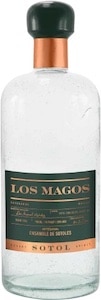
ABV: 38% (76 proof)
Aged: -
Price: $55
Los Magos Sotol Blanco is made from 100% Sotol plant. There are no additives used, and all plants are sourced sustainably. After a triple distillation process, the spirit rests for a short time before it's bottled.
The liquor from the Chihuahuan desert has a complex flavor profile. The sweet hints of honey and fresh flavors like citrus mix with spicy and peppery notes. And there's also a distinct but light smoky taste to it.
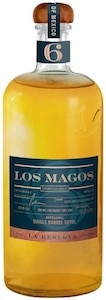
ABV: 42%
Aged: 6 years
Price: $300 (MSRP)
There aren't that many brands producing high-quality Sotol. Los Magos' Reserva Sotol expression ages for six years. And it's not comparable to Mezcal, let alone Tequila. So there's probably no other brand at the moment that released such a rare product.
The plan was to release the spirit in early 2022, but to online shoppers only. Apparently, it's available for purchase at selected retailers. -The price for one bottle is $300.
I didn't have the chance to try it yes, but surely, the small-batch release is exquisite. After aging for six years, the flavors should be even more complex and rounder. If you want to grab a bottle, try to be quick once it's out because Los Magos announced that the batch only makes 1,000 liters of the aged Sotol.
The company behind the Los Magos brand is Los Magos Spirits International (LMSI). It was founded back in 2020 by Eduardo Almanza and Juan Pablo Carvajal to grow the sales of Los Magos Sotol.
However, the Sotol from Los Magos has been available since 2014. The initial idea was to create a spirit that brings ancient traditions closer to a more modern audience by using an artisanal approach. But then the Sotol started to draw attention not only from spirit enthusiasts but also from bartenders. Hence, LMSI was founded to help grow the brand. As the brand is still relatively small, it heavily relies on its commitment to producing a Sotol of unparalleled quality.
The first big step in the expansion was the launch in the US. And this makes a lot of sense considering the big neighbor already is the number one consumer of other Mexican spirits like Tequila -and lately also Mezcal.
Sotol is an up-and-coming spirit, but the number of quality brands is still low. The following two brands are worth mentioning, though: